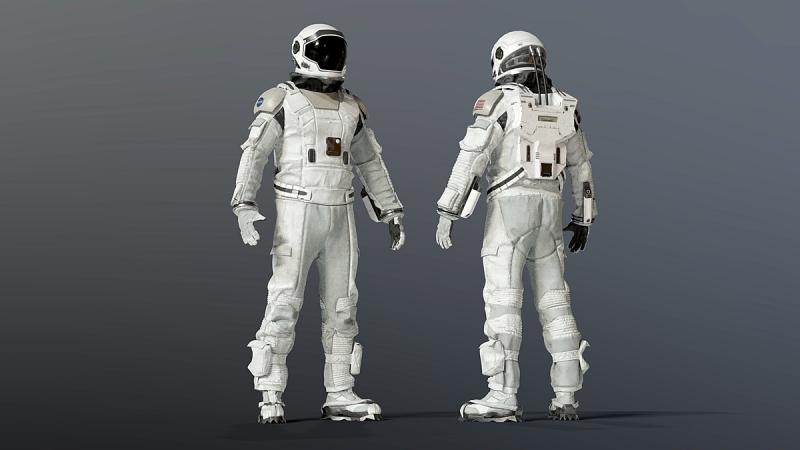Spacesuits represent one of the most critical advancements in human space exploration, designed to ensure astronaut safety and functionality in the harsh environment of outer space. These complex garments enable humans to survive and operate beyond Earth’s atmosphere, providing life support, mobility, and protection against extreme temperatures, radiation, and micrometeoroids. Over the decades, spacesuit technology has evolved dramatically, reflecting advancements in materials science, life-support systems, and ergonomic design to meet the increasing demands of space missions.
Advanced Life Support Systems Embedded in Contemporary Spacesuits
A modern Spacesuit integrates a sophisticated life support system that supplies oxygen, regulates temperature, and removes carbon dioxide and moisture. Essential to astronaut survival, this portable life support system (PLSS) functions independently of spacecraft systems during extravehicular activity (EVA). The suit maintains internal pressure to balance the vacuum of space and prevents decompression sickness, known as “the bends,” ensuring human physiological stability. Moreover, temperature control is crucial since space can swing from extreme heat under the sun to frigid cold in shade. Integrated thermal regulation often uses liquid cooling and ventilation garments to maintain a stable body temperature, enhancing comfort and performance during prolonged spacewalks.
Cutting-Edge Materials Enhancing Durability and Mobility of Spacesuits
Material innovation plays a pivotal role in the durability and mobility of spacesuits. These suits are constructed using layers of specialized fabrics such as Kevlar, Nomex, and urethane-coated nylon, providing puncture resistance and thermal insulation. The outer layers safeguard the wearer from micrometeorites and radiation, while inner layers focus on comfort and flexibility. Recent developments include incorporating advanced polymers and composites that reduce weight without compromising strength. These improvements allow astronauts to maneuver more freely during EVAs, which is essential for construction tasks on space stations, satellite repairs, and lunar or Martian explorations. Enhanced joint designs and flexible bearings further contribute to greater range of motion and reduced fatigue.
Spacesuit Design Considerations for Long-Duration Space Missions
Designing spacesuits for extended missions on the Moon, Mars, or beyond introduces complex challenges. Extended use requires suits to be more comfortable, durable, and self-sufficient, reducing the need for frequent resupply. Innovations aim to create modular suits with interchangeable parts for easy maintenance and customization according to mission needs. Life support systems must support longer durations and accommodate waste management efficiently. Additionally, suits designed for planetary exploration require dust-resistant and abrasion-resistant surfaces since lunar and Martian regolith presents distinct environmental hazards. Incorporating enhanced communication systems and heads-up displays facilitates better interaction between astronauts and their mission control center, improving safety and efficiency during surface operations.
Commercial Opportunities Emerging from Spacesuit Manufacturing and Technology
The growing interest in space tourism and commercial spaceflight is expanding the market for next-generation spacesuits. Private companies are investing in developing user-friendly, accessible spacesuit models suitable for suborbital and orbital commercial flights. These designs emphasize safety, comfort, and aesthetics for the non-professional space traveler while maintaining strict compliance with regulatory and safety standards. Furthermore, partnerships between space agencies, defense sectors, and private enterprises foster innovation in materials and wearable technologies, generating business opportunities within the aerospace sector. The commercial demand also drives advancements in manufacturing techniques such as 3D printing of suit components, customizable ergonomics, and smart textiles embedded with sensors to monitor astronaut health and suit integrity in real time.
Navigating Current Aerospace Suit Market Trends with Industry Reports
For stakeholders and researchers interested in understanding the trajectory of spacesuit technology and market dynamics, comprehensive market research reports provide detailed analysis covering key players, technological advancements, and regional market segmentation. These reports delve into emerging trends driven by governmental space missions, private sector participation, and evolving consumer needs in space tourism. Analyzing market drivers like increased government funding in deep space exploration, advancements in additive manufacturing for aerospace, and rising demand for protective garments in high-altitude aviation helps navigate the competitive landscape effectively. Additionally, forecasts predicting future growth enable industry participants to strategize product development and market entry accordingly.
Future Innovations Shaping the Next Generation of Extravehicular Mobility Units
Looking forward, spacesuit innovation focuses on integrating artificial intelligence, enhanced sensor arrays, and improved energy efficiency to create more autonomous suits. Smart suits equipped with biometric monitoring systems can relay real-time health metrics, environmental data, and oxygen consumption rates, empowering astronauts and mission control to make informed decisions during EVAs. Developments in robotics and exoskeleton technologies aim to augment human strength and reduce fatigue in low-gravity environments, while advances in nanotechnology may provide enhanced shielding against cosmic radiation. Sustainable design principles also encourage reusability and recyclability, essential for long-term missions where resupply is limited.
In conclusion, spacesuits remain indispensable for human space exploration, continually evolving to meet increasingly demanding mission profiles. The intersection of material science, life support innovation, and digital technology ensures these suits not only protect human life but also empower exploration beyond Earth’s bounds. As the aerospace sector expands, understanding current market trends and technological innovations through detailed reports provides strategic insights to capitalize on emerging opportunities within this specialized but rapidly growing industry.
Get this Report in Japanese Language: 宇宙服
Get this Report in Korean Language: 우주복
Read More Articles Related to this Industry
Night Vision Goggles: A Game-Changer for Aero-Medical Missions
About Author:
Money Singh is a seasoned content writer with over four years of experience in the market research sector. Her expertise spans various industries, including food and beverages, biotechnology, chemical and materials, defense and aerospace, consumer goods, etc. (https://www.linkedin.com/in/money-singh-590844163)
